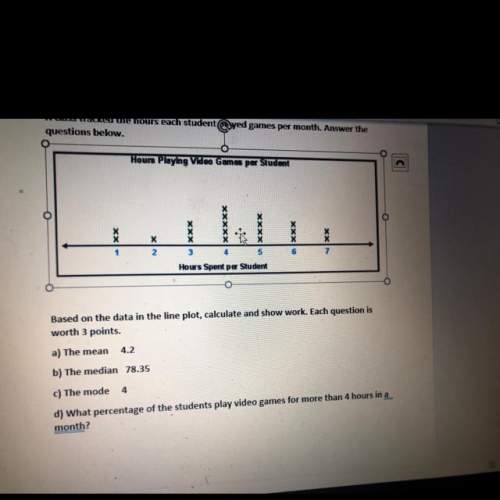
Mathematics, 18.06.2020 17:57 missheyward30
Consider the following differential equation. (sin(y) – y sin(x)) dx + (cos(x) + x cos(y) - y) dy = 0 Let M = sin(y) – y sin(x) and N = cos(x) + x cos(y) – y. Find the following partial derivatives. My = cos y – sin(x) Nx = -sin (x) + cos(y) = sin(y) – y sin(x). Integrate each term of this partial derivative with respect to x, letting h(y) be an unknown function in y. f(x, y) = x sin(y) + y cos(x) + hy) Find the derivative of h(y). h'(Y) = -cos(y) – cos(x)
Is the given differential equation exact?
yes
no
Determine whether the given differential equation is exact. If it is exact, solve it. (If it is not exact, enter NOT.)

Answers: 1


Other questions on the subject: Mathematics

Mathematics, 21.06.2019 14:00, ninaaforever
Alawn mower manufacturer incurs a total of 34,816 in overhead costs and 388 per lawn mower in production costs. how many lawn mowers were manufactured if the average cost of productions is 660
Answers: 3

Mathematics, 21.06.2019 16:20, whitneyt3218
7.(03.01 lc)which set represents the range of the function shown? {(-1, 5), (2,8), (5, 3), 13, -4)} (5 points){-1, 2, 5, 13){(5, -1), (8, 2), (3,5), (-4, 13)){-4, 3, 5, 8}{-4, -1, 2, 3, 5, 5, 8, 13}
Answers: 3

Mathematics, 21.06.2019 19:20, bounce76
When are triangles considered similar? a. corresponding angles are equal andcorresponding sides are proportionalb. corresponding angles are proportional andcorresponding sides are equalc. corresponding angles are equal orcorresponding sides are proportionald. corresponding angles are proportional orcorresponding sides are equal select the best answer from the choices providedmark this and retumsave and exitnext
Answers: 2

Mathematics, 21.06.2019 21:30, Joejoe1813
Due to bad planning, two of the local schools have their annual plays on the same weekend. while 457 people attend one, and 372 attend the other, only 104 people were able to attend both. how many people went to at least one play?
Answers: 1
You know the right answer?
Consider the following differential equation. (sin(y) – y sin(x)) dx + (cos(x) + x cos(y) - y) dy =...
Questions in other subjects:


Mathematics, 12.12.2019 20:31


Social Studies, 12.12.2019 20:31

Computers and Technology, 12.12.2019 20:31








